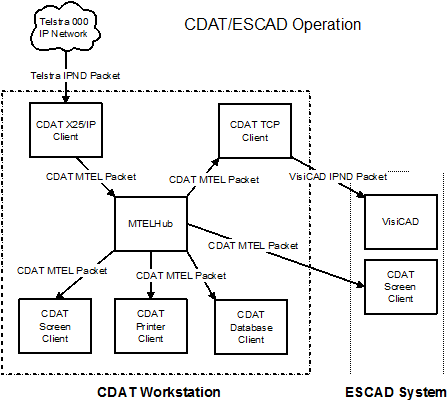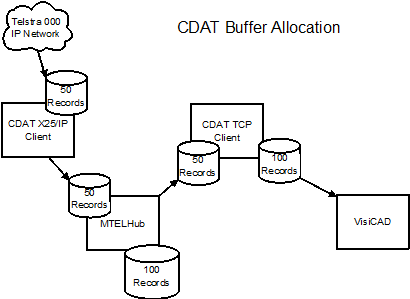This page describes the operation of
the TCP Client dedicated service which delivers the CDAT IPND packet
to a TCP Client in the CAD system.
The CDAT TCP
Client is part of the CDAT system shown below. The flow of
information is appended with different headers as it passes
through the system.
Each type of packet has header
information which the system requires so packets can be routed
correctly.
Each packet type contains the original
IPND packet from Telstra, and so the format of the other packets
preserves this information.

CDAT
buffers all input and output streams so that it can multitask
operations. This allows the event driven tasks to perform
unhindered. Timers within the programs keep testing the buffers
for information. In this way TCP events and logging can operate
in near real time without blocking each other. It also provides
deterministic performance for all tasks involved with the
client.
Logging
is also buffered and printed to the screen when there is no data
to be presented. For this reason, Screen logging may be behind
the actual delivery of the real information.
The diagram below shows the clients and
their relative buffers.


